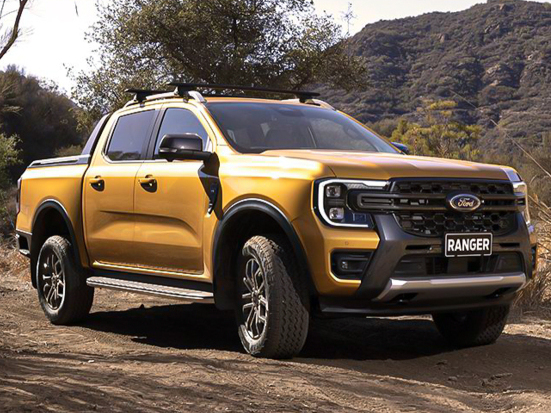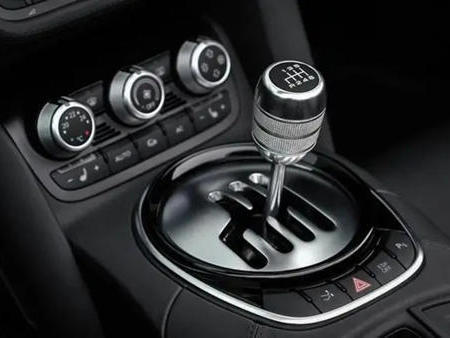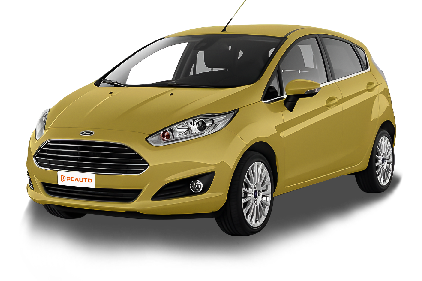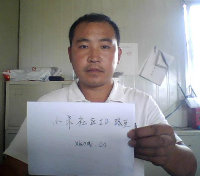Q
Do Ford Fiestas have good handling?
The Ford Fiesta is well - loved by many driving enthusiasts in the Malaysian market for its agile handling. This small car, with its compact body size and precise steering system, is especially suitable for driving on city roads and winding mountain roads. Its chassis is tuned to be more sporty, providing good support when cornering and giving drivers more confidence. The Fiesta's electric power steering system is highly responsive, and the steering wheel feedback is clear. Coupled with the short - wheelbase design, it maneuvers easily in narrow roads or during parking. Given the winding and hilly road conditions in Malaysia, the Fiesta's handling performance is truly commendable.
It's worth noting that handling doesn't solely depend on the vehicle's design; the choice of tires is also crucial. It is recommended that car owners choose suitable tires according to their actual needs. For example, selecting tires with better drainage during the rainy season can further enhance driving safety and the handling experience. Additionally, regularly checking the suspension and steering systems to keep the vehicle in its best condition is also an important part of ensuring good handling.
Special Disclaimer: This content is published by users and does not represent the views or position of PCauto.
Related Q&A
Q
Is a Ford Fiesta better than a Focus?
In the Malaysian market, the Ford Fiesta and Focus are positioned differently, catering to consumers with different needs. As a small car, the Fiesta excels in flexible handling and fuel economy, making it a great choice for urban commuting, especially in busy traffic areas like Kuala Lumpur. Its compact body makes parking a breeze, and the 1.5L three - cylinder engine strikes a good balance between power and fuel consumption.
On the other hand, the Focus is a compact car with more spacious interior, which is particularly suitable for family users. Its 1.5L EcoBoost engine delivers stronger power performance, ensuring a more stable drive at high speeds. The rear - legroom of the Focus is significantly better than that of the Fiesta.
Both cars are equipped with the SYNC in - vehicle system, but the Focus may offer more advanced driving assistance features in its high - end versions. It's worth noting that in Malaysia's rainy climate, the Focus has a slightly better passability due to its higher ground clearance, while the Fiesta's lightweight body allows for more sensitive handling on slippery roads.
When making a choice, one needs to weigh the space requirements and usage scenarios. If you often carry family members and have a sufficient budget, the Focus is more practical. However, if you mainly commute alone and prioritize fuel efficiency, the Fiesta offers better value for money. Both models have local after - sales service networks, providing similar levels of maintenance convenience.
Q
Is the Ford Fiesta a big car?
The Ford Fiesta isn't a large vehicle. It belongs to the B-segment (subcompact car category). Its length varies by model. For instance, the Fiesta Sport 1.5 is 3,982 millimeters long, while the Fiesta Sedan Titanium 1.5 stretches to 4,323 millimeters. It's about 1,722 millimeters wide and around 1,489 millimeters tall. These dimensions are typical of subcompact cars, giving it nimble handling on city roads.
This car usually seats five people. Although the sedan version has a larger 471-liter trunk, the 276-liter trunk of the hatchback version better meets the capacity standard of subcompact cars, making it ideal for daily commuting and small families. The compact body size also results in better fuel economy. The official fuel consumption of some models can be as low as 5.3 liters per 100 kilometers, which is another advantage of this subcompact car.
Q
How much full tank does a Ford Fiesta have?
The fuel tank capacities of different models of the Ford Fiesta are all 43 liters. This capacity is just average for a B-segment small car. It can meet the needs of daily commuting and some short-distance trips, reducing the hassle of frequent refueling. When actually refueling, since the fuel tank capacity calibrated by the manufacturer is up to the safety limit, there is still space from the safety limit to the tank opening. So, the actual refueling amount may exceed 43 liters. Car owners can check the remaining fuel through the fuel gauge with the markings "E" and "F" on the right side of the in-car fuel display. When the pointer is close to "E", it means the fuel is almost running out, and when it's close to "F", it means there is plenty of fuel. This makes it convenient for car owners to reasonably arrange their trips and refueling plans.
Q
Is a Ford Fiesta economical?
The Ford Fiesta is truly an affordable small car in the Malaysian market. It has good fuel economy, especially the version equipped with a 1.5-liter Ti-VCT naturally aspirated engine. Its urban fuel consumption is about 6.5 liters per 100 kilometers, and it can drop to around 5 liters per 100 kilometers during highway cruising. This can save fuel costs for both daily commuting and long-distance driving. The maintenance cost of the Fiesta is also relatively reasonable. The parts are in sufficient supply and the prices are moderate, making it suitable for consumers with limited budgets.
Moreover, the Fiesta has flexible handling. Its body size is suitable for the narrow city roads in Malaysia, and it's easy to park. If you're looking for a more fuel-efficient option, you can pay attention to the version with an Ecoboost turbocharged engine. Although it has stronger power, the fuel consumption still remains at a good level.
In Malaysia's hot and rainy climate, the Fiesta's air - conditioning system has good cooling performance. Coupled with its reliable mechanical structure, it's an economical small car suitable for local use. Of course, when buying a car, besides fuel consumption, you also need to comprehensively consider factors such as insurance, road tax, and maintenance costs. It is recommended that you take a test drive in person and compare models in the same class before making a decision.
Q
How many Litres per 100km is a Ford Fiesta?
The fuel consumption of the Ford Fiesta varies depending on the specific model and powertrain configuration. Generally, the version equipped with a 1.5-liter naturally aspirated engine has a fuel consumption of about 5.5 to 6.5 liters per 100 kilometers under combined driving conditions. The version with a 1.0-liter EcoBoost turbocharged engine is even more fuel-efficient, approximately between 4.5 and 5.5 liters per 100 kilometers. The actual fuel consumption is also affected by driving habits, road conditions, and vehicle maintenance. For consumers in Malaysia, the Fiesta's fuel economy is quite cost - effective, especially suitable for urban commuting. Considering the relatively high fuel prices in Malaysia, choosing a fuel - efficient car can effectively reduce daily vehicle - using costs. In addition, the Ford Fiesta is also popular for its agile handling and compact body size, which is very suitable for navigating through the narrow city roads in Malaysia. If you're particularly sensitive to fuel consumption, it's recommended to regularly maintain your vehicle, keep the tire pressure normal, and adopt a smooth driving style. These measures can help further reduce fuel consumption.
Q
Is the Ford Fiesta spacious?
As a small hatchback designed primarily for city driving, the space performance of the Ford Fiesta needs to be evaluated in the context of its vehicle type positioning. Take the commonly - seen five - door version in the Malaysian market as an example. The front seats offer ample space for adults under 175 cm in height, but the rear legroom is relatively tight, making it more suitable for children or short - distance rides. The standard luggage compartment volume is 292 liters, which can meet the needs of daily shopping. The cargo - carrying capacity can be further expanded by folding down the rear seats.
It's worth noting that the Fiesta's cabin design features an optimized horizontal layout, which provides good comfort for two passengers. However, if you often need to carry five people on long - distance trips, it may feel cramped. For Malaysian consumers, this type of small car has the advantage of being able to maneuver flexibly in congested cities like Kuala Lumpur and is also more convenient to park.
Similar - sized models in the same class include the Honda Jazz and the Toyota Yaris, each with its own unique features in terms of space utilization. For instance, the Jazz's Ultra seat design allows for more variable combinations. It is recommended that potential buyers visit the showroom to have a hands - on experience based on the number of family members and the main usage scenarios. In particular, they should test the rear knee space and the convenience of getting in and out of the car.
The low fuel consumption and road tax exemption policy for small cars in Malaysia are also practical factors worth considering.
Q
Why is the Ford Fiesta so fun to drive?
The Ford Fiesta is a blast to drive, mainly thanks to its nimble body size and precise chassis tuning. This small car performs exceptionally well on Malaysia's narrow and winding roads. Its lightweight body, paired with the 1.5L Ti - VCT engine, offers linear power output. The 6 - speed PowerShift dual - clutch transmission shifts smoothly and quickly. The electric power steering system is light and flexible at low speeds and becomes stable at high speeds. This kind of dynamic performance is especially suitable for the complex road conditions in the urban - rural fringe areas of Malaysia.
It's worth mentioning that the torsion beam rear suspension of the Fiesta has undergone sporty tuning. It provides sufficient support while maintaining comfort. Combined with the short wheelbase design, it controls the body roll well when cornering, giving the driver full confidence.
For Malaysian consumers, the Fiesta has an easily overlooked advantage: its relatively narrow body width allows it to navigate through crowded urban areas and traditional old neighborhoods more calmly. This feature is particularly useful in traffic - congested cities like Kuala Lumpur.
In addition, the SYNC in - car entertainment system equipped in this model supports voice control, enabling the driver to operate multimedia functions safely while enjoying the driving pleasure. This design concept that combines practicality and fun is an important reason why the Fiesta remains popular in the Malaysian market.
Q
How far can a Ford Fiesta go on a full tank?
The cruising range of the Ford Fiesta with a full tank of fuel mainly depends on the vehicle model's fuel tank capacity and actual fuel consumption performance. Take the common 1.5L naturally aspirated version in Malaysia as an example. Its fuel tank capacity is about 42 liters. According to the official data, the combined fuel consumption is about 5.5L per 100km. Theoretically, it can travel about 760 kilometers on a full tank. However, the actual cruising range will be affected by factors such as driving habits, road conditions, and air - conditioning usage. For instance, in congested urban areas, the range may drop to 600 kilometers, while driving at a constant speed on the highway may allow it to exceed 800 kilometers.
It's worth noting that the quality of RON95 gasoline in Malaysia and the hot climate may slightly affect fuel efficiency. It is recommended that car owners perform regular maintenance, such as replacing the air filter and spark plugs, to maintain the best fuel - consumption performance. Meanwhile, Fiesta models from different years may have slight variations in cruising range due to engine tuning differences. If you want a more accurate estimate, you can observe the average fuel - consumption display on the dashboard and calculate the real - time cruising range based on the remaining fuel in the tank.
Q
Is a Ford Fiesta a good beginner car?
For beginners in Malaysia, the Ford Fiesta is a worthy entry - level model to consider. It has a moderate body size and is very flexible to handle, which makes it perfect for zipping through the city, especially in traffic - congested areas like Kuala Lumpur. The 1.5L naturally aspirated engine of the Fiesta offers a smooth power output and good fuel economy, making it suitable for daily commuting. Meanwhile, its chassis is tuned for comfort and can handle the diverse road conditions in Malaysia.
In addition, the safety features of the Fiesta, such as ABS, EBD and multiple airbags, provide extra protection for new drivers. It's important to note that while the maintenance and repair costs of the Fiesta are relatively reasonable among joint - venture brands, they might be slightly higher compared to some local brands like Perodua or Proton. So, you need to take this into account when planning your budget.
For young Malaysians who have just got their driving licenses, the stylish appearance and great driving experience of the Fiesta can meet their expectations for their first car. However, if you plan to keep the car for a long time, it's advisable to learn about the resale value in the used - car market and the coverage of the repair network in advance.
Q
Is the Ford Fiesta good for long distances?
As an economical subcompact car, the Ford Fiesta has won the favor of urban commuters in the Malaysian market due to its nimble handling and fuel efficiency. However, for long - distance driving, its performance needs to be comprehensively evaluated. The Fiesta's 1.5L naturally aspirated or 1.0L EcoBoost turbocharged engines can provide sufficient power. Coupled with its lightweight body design, it has excellent fuel consumption performance during high - speed cruising (about 5 - 6L/100km), making it suitable for cross - state trips on a budget.
However, its compact body size may lead to a somewhat cramped rear - legroom and limited trunk capacity (292L). Carrying a full load of passengers or large luggage might affect comfort. The chassis tuning is more on the sporty side, and on some long - distance sections with poor road conditions in Malaysia (such as the East Coast Expressway), it may transmit more bumps. It is recommended to choose the model version with an independent rear suspension first.
It's worth noting that the Fiesta's SYNC in - car system supports Apple CarPlay/Android Auto, which can enhance the convenience of long - distance navigation. But the sound insulation is average. For long - term driving, it is advisable to keep the speed below 110km/h to reduce wind noise. If you travel long - distance frequently, you can consider adding a cruise control accessory (already standard on some high - end models) and opt for the leather - seat version to improve comfort. Also, regularly check the tire wear, as the lighter body of a subcompact car requires higher tire grip when cornering at high speeds.
Popular Cars
Model Year
Car Compare
Car Photo
Latest Q&A
Q
How reliable is a 2019 Porsche Macan?
The 2019 Porsche Macan delivers solid reliability, thanks to its proven 2.0T or 3.0T engines that offer consistent power delivery. The PDK dual-clutch transmission is another strong point—it’s both durable and buttery-smooth.
Porsche’s sporty DNA shines through in the Macan’s chassis tuning and all-wheel-drive system, yet it doesn’t compromise everyday comfort. Owner feedback suggests that sticking to the factory maintenance schedule keeps most examples running trouble-free, though be prepared for higher upkeep costs (as with any luxury vehicle).
Its strong resale value speaks volumes about its reputation for dependability. If you’re after driving thrills without sacrificing SUV practicality, the 2019 Macan is a compelling pick. Just be sure to get a pre-purchase inspection and verify full service history—it’ll pay off in the long run.
Q
How much is a 2019 Porsche worth?
The value of a 2019 Porsche depends on the model, mileage, condition, and specs. Take the popular Cayenne, for example—used ones typically go for between RM300k to RM500k. A 911 Carrera might range from RM500k to RM800k, while an entry-level 718 Boxster or Cayman could be around RM250k to RM400k. For luxury sedans like the Panamera, expect prices between RM350k to RM600k, but always check the actual condition and option list.
Porsches hold their value well, especially limited editions or high-performance GT models, but maintenance costs and service history play a big role in resale pricing. If you're buying, stick to official certified pre-owned channels or get a professional inspection. Always verify warranty transfers and repair records.
Pro tip: Compare listings on local used-car platforms and check recent sales data—market demand and inventory fluctuations affect pricing. Also, factory options (like sport packages or premium audio) can boost resale value, while accident history or multiple owners might slash the price by 10-20%.
Q
Does the 2019 Macan have a good sound system?
The 2019 Porsche Macan delivers an impressive audio performance, particularly with the optional Bose® Surround Sound System or the top-tier Burmester® High-End Surround Sound System—both offering an immersive listening experience.
The Bose® setup packs 14 speakers with 665 watts of total power, delivering crisp audio and punchy bass perfect for pop and electronic music. Meanwhile, the Burmester® system steps it up with 16 speakers and 1,000 watts, creating a wider soundstage and superior detail reproduction—ideal for classical or high-resolution tracks.
Both systems integrate seamlessly with Porsche’s standard Communication Management (PCM), supporting Apple CarPlay and multiple audio sources. If sound quality is a priority, be sure to specify your audio preference at purchase—the base model only comes with a standard speaker setup.
For the best performance, play lossless files via USB or high-quality Bluetooth codecs, and keep the system firmware updated for optimal operation.
Q
What is the resale value of a 2019 Macan?
The resale value of a 2019 Porsche Macan depends on factors like condition, mileage, specs, and service history. Current used prices hover between RM250k to RM350k, with higher trims commanding premium prices. As Porsche's entry SUV, the Macan holds its value better than most rivals thanks to brand prestige and sporty DNA – especially models optioned with Sport Chrono or full leather interiors fetching stronger money.
Pro tip: Get a pre-sale inspection and organize your maintenance paperwork – this really helps maximize resale. Macans move quickly in our local used market, with 3-5 year-old examples being the sweet spot when depreciation levels off. If you're upgrading, consider Porsche Approved Certified pre-owned – you'll pay a slight premium over private sales, but the extended warranty and factory refurbishment save headaches down the road.
Q
Is a 2019 Porsche Macan a good car?
The 2019 Porsche Macan is a well-rounded luxury SUV that stays true to Porsche's performance DNA while delivering everyday practicality. It comes with your choice of a peppy 2.0T or more powerful 3.0T engine, paired with Porsche's brilliant 7-speed PDK transmission that shifts like butter. The chassis strikes that sweet spot between sporty handling and comfortable cruising - perfect for both city commutes and weekend backroad blasts.
Inside, you'll find Porsche's typical top-notch craftsmanship with a standard 10.9-inch touchscreen featuring Apple CarPlay. Just don't expect limo-like rear legroom. These things hold their value surprisingly well, though maintenance will cost you more than your average SUV - but then again, you get Porsche's excellent service network.
Among its competitors, the Macan stands out for its driver engagement. If you want more grunt, step up to the Macan S or GTS. One pro tip: if you're shopping used, pay special attention to the PDK's condition and inspect the suspension components. Always better to go through Porsche's certified pre-owned program for that extended warranty peace of mind.
View MoreRelated News

Ford Focus is about to cease production in November and may return in 2027 in the form of an SUV.
WilliamSep 15, 2025

2025 Ford Ranger WildTrak launched, the most powerful diesel version in the Ranger lineup
MichaelAug 25, 2025

Is the Ford Ranger V6 about to enter Malaysia?
LienAug 13, 2025

Reviewing the Ford Ranger: The Dual Advantages of Rugged Appearance and Powerful Performance
Kevin WongApr 21, 2025

Ford Unveils “Simulated Manual Transmission” Patent to Reignite Driving Pleasure in Electric Vehicle
LienApr 2, 2025
View More


















Pros
Cons